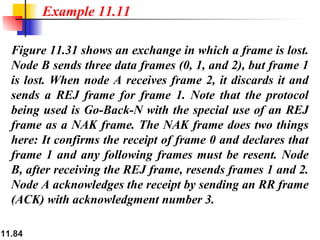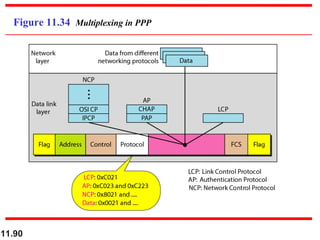This document discusses various data link control protocols. It begins by explaining how data is packaged into frames at the data link layer, using framing techniques like fixed-size and variable-size framing. The key responsibilities of the data link layer are then introduced as flow control and error control. Several protocols are presented that implement these functions on both noiseless and noisy channels, including the simplest protocol, stop-and-wait protocol, and various automatic repeat request (ARQ) protocols. Worked examples demonstrate how these protocols operate in different scenarios.







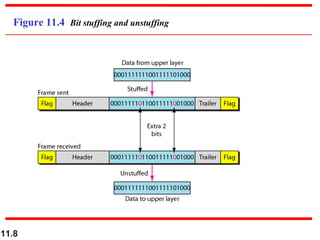



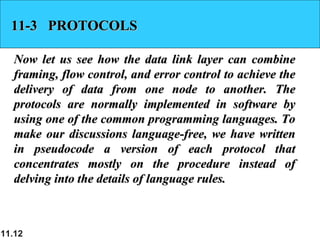







































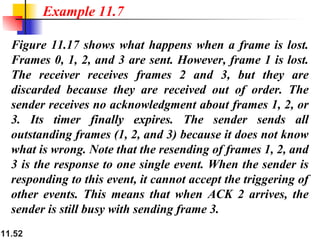



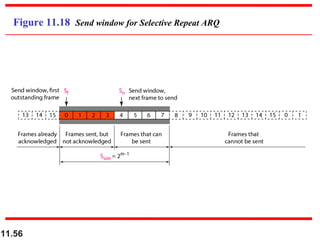
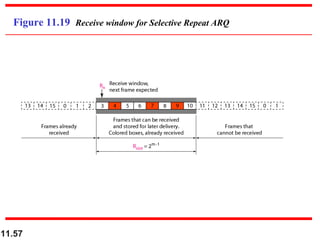









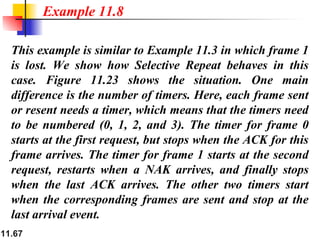













![11.81
Figure 11.30 shows an exchange using piggybacking.
Node A begins the exchange of information with an
I-frame numbered 0 followed by another I-frame
numbered 1. Node B piggybacks its acknowledgment of
both frames onto an I-frame of its own. Node B’s first
I-frame is also numbered 0 [N(S) field] and contains a 2
in its N(R) field, acknowledging the receipt of A’s frames
1 and 0 and indicating that it expects frame 2 to arrive
next. Node B transmits its second and third I-frames
(numbered 1 and 2) before accepting further frames from
node A.
Example 11.10](https://image.slidesharecdn.com/11datalinkcontrol-160210165455/85/11-Data-Link_Control-81-320.jpg)


